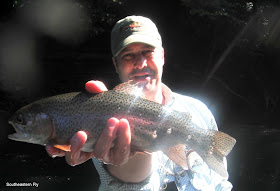 |
| Gotta Love the Brown Trout in May |
 |
| Where the Boat Leaves From |
With the Center Hill in eternal draw down streamers on sinking line is the best way to chase the fish in the Caney Fork. The water flow can be tough on both anglers and the person on the oars, the payoff can be big, real big. But be aware the goose egg is a reality as well.
 |
| A Usual Suspect |
 |
| The "Bearded Guy" with More Brown Trout Goodness |
We have started booking trips again and June is filling up already. Anglers can reach us by phone, email or text to get a good date on the Middle Tennessee rivers, as well as East Tennessee.






